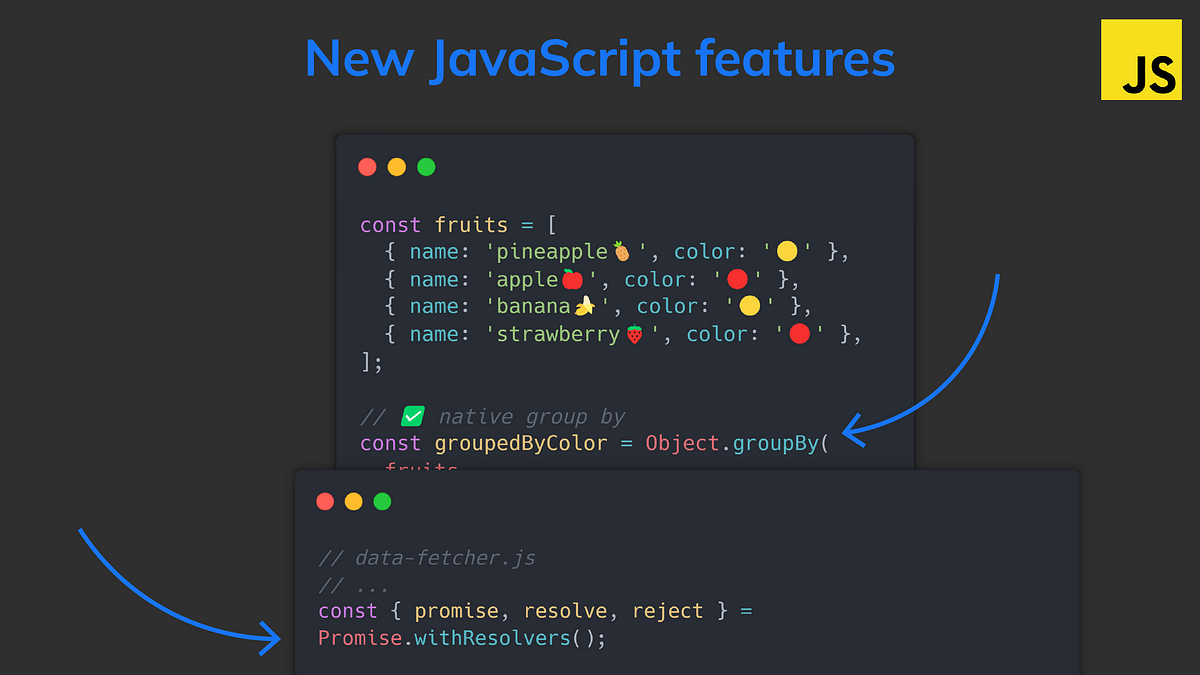Comprehensive Overview of the 5 Most Impactful New JavaScript Features in ES15 (2024)
Core Concepts
The latest version of JavaScript, ES15 (2024), introduces 5 groundbreaking new features that significantly enhance coding efficiency and productivity.
Abstract
The article provides an overview of the 5 most impactful new JavaScript features introduced in ES15 (2024).
Native Array Group-By: This feature allows developers to easily group array elements based on specified criteria, streamlining data manipulation and aggregation tasks.
The article does not go into further detail about the remaining 4 new features. However, it suggests that these additions, ranging from sophisticated async capabilities to modern regex support, make JavaScript coding easier and faster than ever before.
5 amazing new JavaScript features in ES15 (2024)
Stats
No specific data or metrics provided.
Quotes
No direct quotes included.
Key Insights Distilled From
by Tari Ibaba at medium.com 06-12-2024
https://medium.com/coding-beauty/es15-javascript-features-fc2d1f7a00ce
Deeper Inquiries
What are the other 4 new JavaScript features introduced in ES15 (2024) and how do they improve developer productivity and code quality?
In ES15 (2024), apart from the native array group-by feature, there are four other significant JavaScript features that enhance developer productivity and code quality:
Enhanced Async Features: ES15 introduces more sophisticated async features like async iterators and generators, making asynchronous programming in JavaScript more intuitive and efficient. Developers can now handle asynchronous operations more elegantly, leading to cleaner and more maintainable code.
Syntactic Sugar for Arrays: ES15 brings syntactic sugar for arrays, allowing developers to perform common array operations more concisely and with less boilerplate code. This feature simplifies array manipulation tasks, making code more readable and reducing the chances of errors.
Modernized Regular Expressions (Regex): With ES15, JavaScript's regex capabilities have been modernized, offering more powerful and flexible pattern matching functionalities. This improvement enables developers to work with complex string patterns more effectively, enhancing the overall quality of regex-related code.
Improved Error Handling: ES15 introduces enhancements in error handling mechanisms, providing developers with more robust tools to manage and catch errors in their code. This feature helps in debugging and maintaining JavaScript applications, ultimately leading to higher code quality and better developer productivity.
These new features in ES15 collectively contribute to streamlining development workflows, reducing code complexity, and improving the overall quality of JavaScript codebases.
How do these new features in ES15 (2024) compare to previous versions of JavaScript in terms of their impact on the language's capabilities and adoption?
The new features introduced in ES15 (2024) represent a significant advancement in JavaScript's capabilities compared to previous versions, impacting the language's adoption and developer experience in several ways:
Enhanced Productivity: The new features in ES15 streamline common development tasks, making coding more efficient and less error-prone. This increased productivity encourages developers to adopt ES15 and leverage its capabilities to build better applications faster.
Improved Code Quality: By introducing modern syntax and functionalities, ES15 helps developers write cleaner, more maintainable code. This improvement in code quality is a key factor driving the adoption of ES15, as developers seek to create robust and scalable applications.
Compatibility and Support: ES15 features are designed to be backward-compatible with existing JavaScript codebases, ensuring a smooth transition for developers. This compatibility, coupled with strong community support and resources, accelerates the adoption of ES15 across the industry.
Innovation and Future-Proofing: The new features in ES15 reflect the JavaScript community's commitment to innovation and evolution. By introducing cutting-edge capabilities, ES15 positions JavaScript as a modern and future-proof language, attracting developers looking to stay ahead in the rapidly changing tech landscape.
Overall, the impact of these new features in ES15 on JavaScript's capabilities and adoption is substantial, driving the language forward and solidifying its position as a versatile and powerful programming tool.
What potential challenges or limitations might developers face when adopting these new ES15 (2024) features, and how can they be addressed?
While the new features in ES15 offer numerous benefits, developers may encounter some challenges or limitations during the adoption process. These issues can be addressed through proper guidance and best practices:
Learning Curve: Developers transitioning to ES15 may face a learning curve when adapting to the new syntax and functionalities. To address this, comprehensive documentation, tutorials, and hands-on practice can help developers familiarize themselves with the new features and overcome any initial challenges.
Compatibility Issues: Integrating ES15 features into existing codebases or working with libraries that do not support ES15 can pose compatibility issues. Developers can address this by using transpilers like Babel to convert ES15 code to older JavaScript versions for broader compatibility.
Tooling and Support: Limited tooling support or IDE compatibility for ES15 features can hinder developers' productivity. Staying updated with the latest plugins, extensions, and IDE updates can help mitigate these challenges and provide a smoother development experience.
Performance Concerns: Certain ES15 features may impact performance if not used optimally. Developers should be mindful of performance implications and follow best practices to ensure efficient code execution and avoid potential bottlenecks.
By proactively addressing these challenges through education, tooling enhancements, and performance optimization strategies, developers can successfully adopt the new ES15 features and leverage their benefits to enhance their JavaScript development workflows.
0
